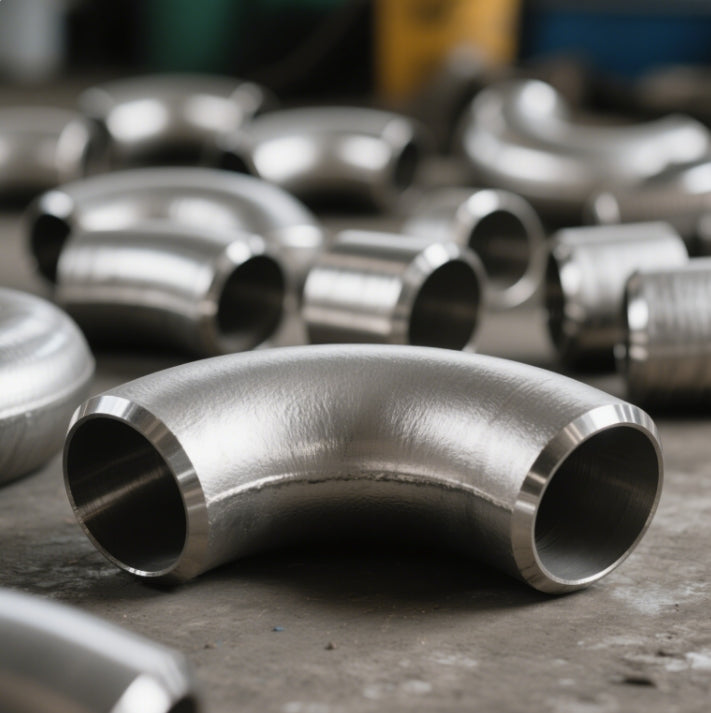
What Is the Strength Range of Stainless Steel?
Table of Contents
Introduction to Stainless Steel Strength
Stainless steel's reputation for durability stems from its unique composition of iron, chromium (minimum 10.5%), and often nickel. This alloy forms a passive chromium oxide layer that prevents rust formation. The material's strength varies dramatically based on its crystalline structure and alloying elements. From kitchen utensils to structural beams in skyscrapers, stainless steel's adaptability comes from manufacturers' ability to engineer specific strength characteristics through controlled manufacturing processes and precise elemental ratios.
Understanding Strength Ranges
Stainless steel's tensile strength spectrum (70,000-220,000 psi) reflects its remarkable versatility. Lower-strength variants (70,000-100,000 psi) excel in applications requiring formability, like sink bowls or automotive trim. Mid-range alloys (100,000-180,000 psi) balance durability and workability for appliances and construction materials. High-end martensitic steels (180,000-220,000 psi) withstand extreme stresses in cutting tools and surgical instruments. This range allows engineers to optimize material selection based on specific load-bearing requirements while maintaining corrosion resistance.
Key Strength Determinants
Three primary factors govern stainless steel strength: chemical composition, manufacturing processes, and thermal treatments. Chromium content directly impacts corrosion resistance and hardness, while nickel enhances ductility. Cold working techniques like rolling or forging can increase strength by up to 200% through strain hardening. Heat treatments such as annealing (softening) or quenching (hardening) allow precise control over material properties. Environmental considerations include temperature extremes that might cause embrittlement or creep deformation over time.
The SUS 304 Advantage
SUS 304 stainless steel dominates consumer applications due to its optimal balance of 18% chromium and 8% nickel content. This austenitic steel maintains strength up to 180,000 psi while retaining exceptional formability. Its non-magnetic properties and superior weldability make it ideal for food processing equipment and architectural features. The alloy's chromium oxide layer self-repairs when scratched, ensuring lasting corrosion resistance. While not the strongest available, SUS 304's combination of cleanability, hygiene, and moderate strength explains its 60% market share in domestic stainless applications.
Steel Type Comparisons
1. Austenitic (304/316): Face-centered cubic structure provides excellent toughness (70,000-180,000 psi) and corrosion resistance. Ideal for chemical plants and marine environments.
2. Ferritic (430/446): Body-centered cubic structure offers moderate strength (60,000-120,000 psi) with magnetic properties. Common in automotive exhaust systems.
3. Martensitic (410/420): Tetragonal structure achieves extreme hardness (100,000-220,000 psi) through heat treatment. Used for turbine blades and cutlery.
4. Duplex (2205): Hybrid structure combines austenitic and ferritic strengths (100,000-150,000 psi) for offshore oil platforms.
Supplier Selection Guide
When evaluating stainless steel suppliers, verify certifications like ASTM A240 for material consistency. Reputable suppliers provide mill test reports detailing chemical composition and mechanical properties. For structural applications, ensure suppliers understand ASME boiler code requirements. For food-grade applications, confirm NSF compliance. Always request samples to test surface finish quality and verify dimensional tolerances. Established suppliers should offer technical support for weld procedure specifications and corrosion testing data relevant to your application environment.
Real-World Applications
1. Architecture: The Chrysler Building's 2205 duplex stainless steel spire withstands wind loads exceeding 150 mph.
2. Medical: Surgical-grade 316L steel maintains 200,000 psi strength while resisting chloride corrosion in sterilization processes.
3. Transportation: Ferritic 409 stainless in automotive exhausts handles 1,500°F temperatures with 80,000 psi sustained strength.
4. Energy: Cold-worked 304L stainless in nuclear reactors maintains integrity under 100,000 psi pressure at 600°F operation.